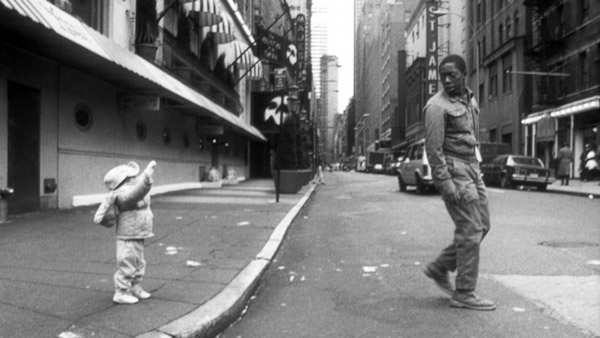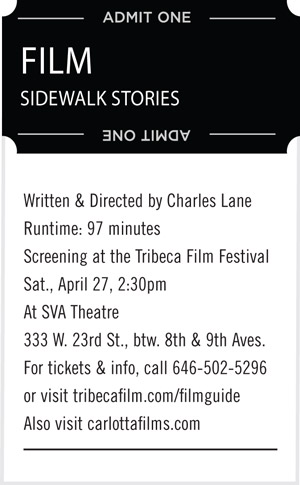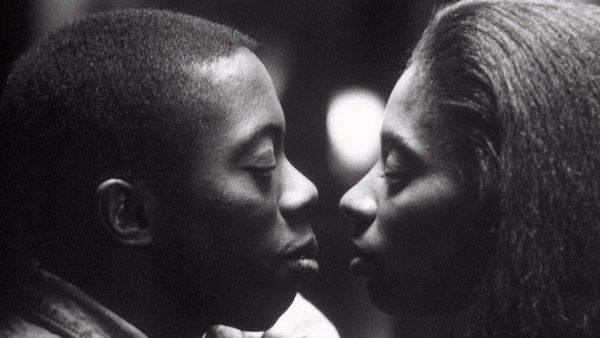

Charles Lane, as the artist and Nicole Lane as the child.
Charles Lane’s low-budget ’80s comedy deserves to be rediscovered
 BY TRAV S.D. | One of the highlights of this year’s Tribeca Film Festival will have to be the long-awaited re-release of Charles Lane’s 1989 “Sidewalk Stories.” Lane’s film, a silent black and white comedy with an African-American cast, won the Prix du Publique award at Cannes that year. Unfortunately, it has gone long unseen and has never been released on DVD. The film was recently restored by Carlotta Films and will be shown for the first time in many years on April 27.
BY TRAV S.D. | One of the highlights of this year’s Tribeca Film Festival will have to be the long-awaited re-release of Charles Lane’s 1989 “Sidewalk Stories.” Lane’s film, a silent black and white comedy with an African-American cast, won the Prix du Publique award at Cannes that year. Unfortunately, it has gone long unseen and has never been released on DVD. The film was recently restored by Carlotta Films and will be shown for the first time in many years on April 27.
“Sidewalk Stories” is strongly influenced by Charlie Chaplin’s films “The Kid,” “A Dog’s Life” and “The Vagabond.” It stars Lane himself as a sidewalk caricature artist who lives in a squat and is forced to care for a two-year-old girl, after he sees her father murdered in a back alley mugging. Unable to go to police (his prints are on the knife), he is forced to play father to the little girl until he can locate the mother. Along the way he meets and falls in love with a nice lady of some means, who helps him out.
The film is full of the grittiness of its time, when the homeless filled New York City streets in record numbers, and the clean-up that began in the mid-90s had not yet begun. Much is filmed around Waverly Place, although it is re-envisioned as a Shangri La for busking performers. The cast of unknowns is terrific, especially the diminutive, Chaplinesque Lane (who proves a gifted mime) and the child, who is played by Lane’s actual daughter.

Charles Lane and Sandye Wilson.
Beautifully shot and edited and frequently quite funny, its memorable set pieces include a scene where Lane must pursue a couple of low-lifes who’ve snatched the girl. In order to do, he swipes a horse-drawn carriage while the driver takes a leak. The couple in the back seat never stop making out throughout the entire chase.
Above all, Lane demonstrates the humanizing power of film, awakening our compassion for the sorts of people who are routinely demonized in the mainstream press. One hopes that a DVD release will soon follow the restoration of this inspirational film — a work that should never be out of circulation.



































